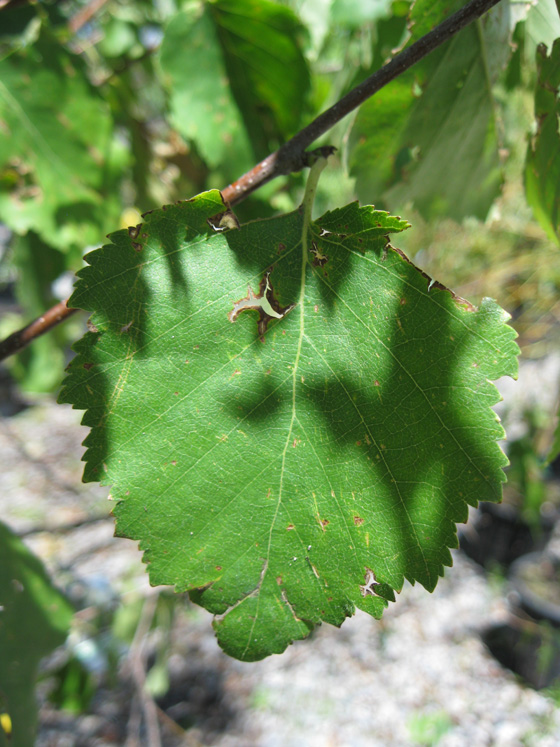| PSC 2620: Woody Trees and Shrub | Course Home | Week 5 |
Betula nigra - River Birch
Plant Viewer
 |
 |
| On older stems the bark exfoliates in sheets, exposing new white bark underneath. | Newer growth has cinnamon colored stems with prominent lenticels. |
 |
 |
| Catkins appear on the tree by summer and will turn brown in the fall. | The fall color is an attractive golden yellow. |
 |
|
| The leaf has a blunted ovate shape and a doubly serrated margin. |
Plant Description
River Birch is a large (40 to 70 feet tall and slightly narrower in width) and attractive shade tree. It is almost always found in a clump form, although some single-trunk specimens exist. It has an upright and rounded form at maturity, but can be quite narrow when younger. It performs best in moist conditions, such as along stream banks or areas with a high water table, but will also perform well under drier conditions as well. Of all the Birches it is the most suited to hot climates.
The most notable ornamental feature of Betula nigra is the bark, especially when young. Young bark is an attractive cinnamon-brown color with abundant lighter-colored horizontal lenticels. The bark peels away in strips around the trunk or branch, producing a light and papery effect on the tree. Unfortunately this ornamental effect is lost as the tree matures and heavily furrowed bark forms.
The green leaves are 1 1/2 to 3 1/2 inches long, and slightly wider in length, creating a somewhat blunted ovate shape. The margin of the leaf is doubly serrated, though close inspection of the leaf is usually required in order to notice this. In the fall the leaves turn yellow and defoliate in a short time. Somewhat-showy catkins emerge on the tree in the summer and by fall these turn a yellowish-brown.
Landscape Use
Use as a shade tree or as a large ornamental tree and it is popular to use to create a naturalized setting. It is also a useful tree for ecosystem restoration projects in riparian areas.
Points of interest
While it is considered the most disease-resistant Birch species, it should still be regularly monitored for bronze birch borer.
Notable Cultivars
Cully (Heritage) The most popular cultivar, its bark is lighter than the regular species and can appear as a creamy-tan to white. It is slightly smaller, reaching a maximum of 50 feet. Heritage is also more resistant to the Bronze Birch Bore.
